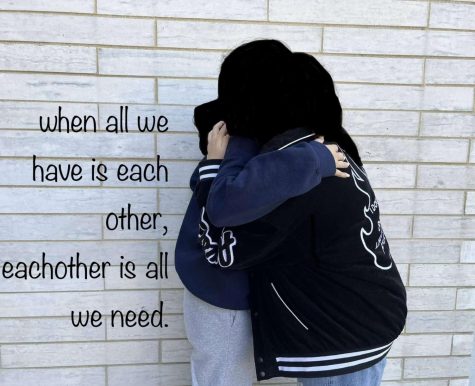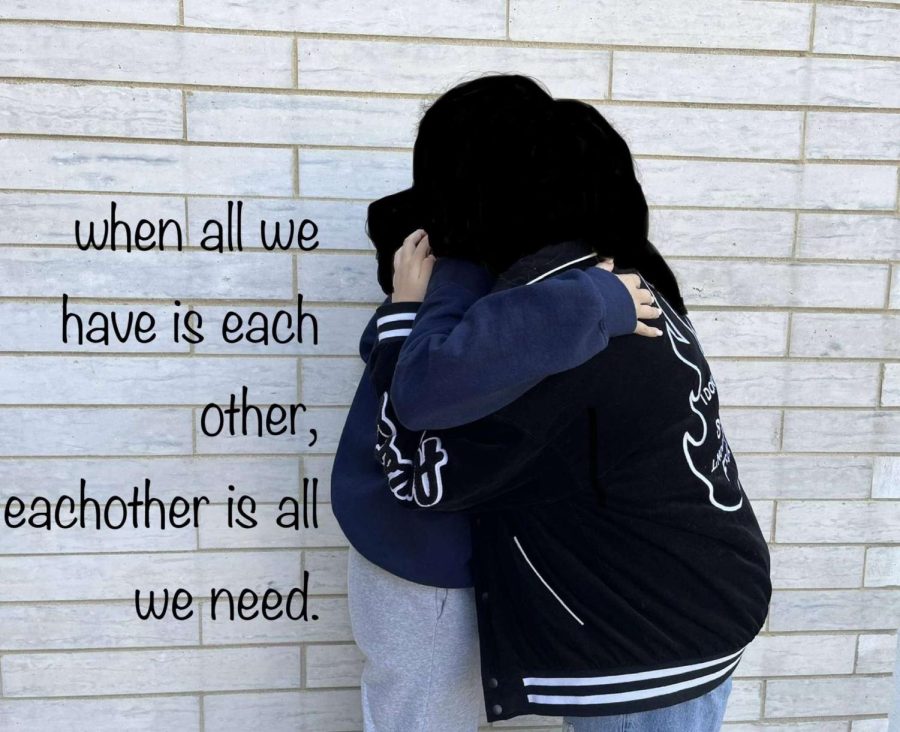September marks suicide prevention month
DGS students hugging to remember the importance of being there for one another.
September marks the start of Suicide Prevention Month. For many, this is a chance for individuals to share their story, their lives: the good, bad and all else in between. For others this is a time to grieve, a way of showing love to the people who are no longer here today.
According to the CDC, death caused by suicide happens every 11 minutes. Suicide doesn’t just target one specific gender, age or ethnicity; it has no bounds.
Mental health throughout the years has become something that our society is less afraid to talk about. Although stigma around the issue still prevails, people are more open to talking about it than they ever were before.
Senior Abby Parson shares her opinion on suicide prevention month and what it means for the community here at DGS as well as outside of it.
“I like to talk to my friends and check in on them and have conversations if they ever need someone to listen to their feelings. I think by having this month, it’s a great reminder to all of us that at the end of the day we are really all we have, and we need to protect and be there for one another–in the good and bad. I also think that this month should be a time to remember people that are no longer with us today,” Parson said.
Suicide in most cases never comes out of nowhere. There are signs leading up to it and if people can learn to identify and respond to these signs, it could make a drastic difference.
DGS Counselor Diana Benoist, speaks upon the numerous signs that an individual could show that are potential signs of suicide. It’s important to note that every person is different and the signs to look out for listed below are not limited to what the person may show.
“Students who seem to be isolating themselves or withdrawing from peers, lack of engagement or participation in activities that normally make them happy, decline in attendance and grades… and in some cases students will start the process of giving away things or saying goodbyes,” Benoist said.
Even though there are resources to help people struggling with their mental health, the importance of human-to-human connection can’t be denied.
DGS social worker Deangelo Gerald emphasizes that the language and words that people choose have meaning, and as a society, people tend to overlook certain things that others say.
“A lot of the times where we fall short as a whole is truly listening to understanding, we are more so listening to respond. But if we listen to understand and dive into those things instead of letting certain things be passive thoughts that we don’t respond to, we can see an impact. A lot of the time we actually do tell our friends and family indirectly how we feel, and we might not even realize that we do it, but we do,” Gerald said.
There is always time to stop and listen, even in a world that feels like it’s impossible to do so. It’s a choice that everyone has the power of making in every conversation they have with the people in their lives.
Sharing one’s story and the stories of others helps eliminate stigma and create an environment where people feel like they can get help without feeling judged.
If you are struggling with your mental health check out the following resources below. You are not alone.



